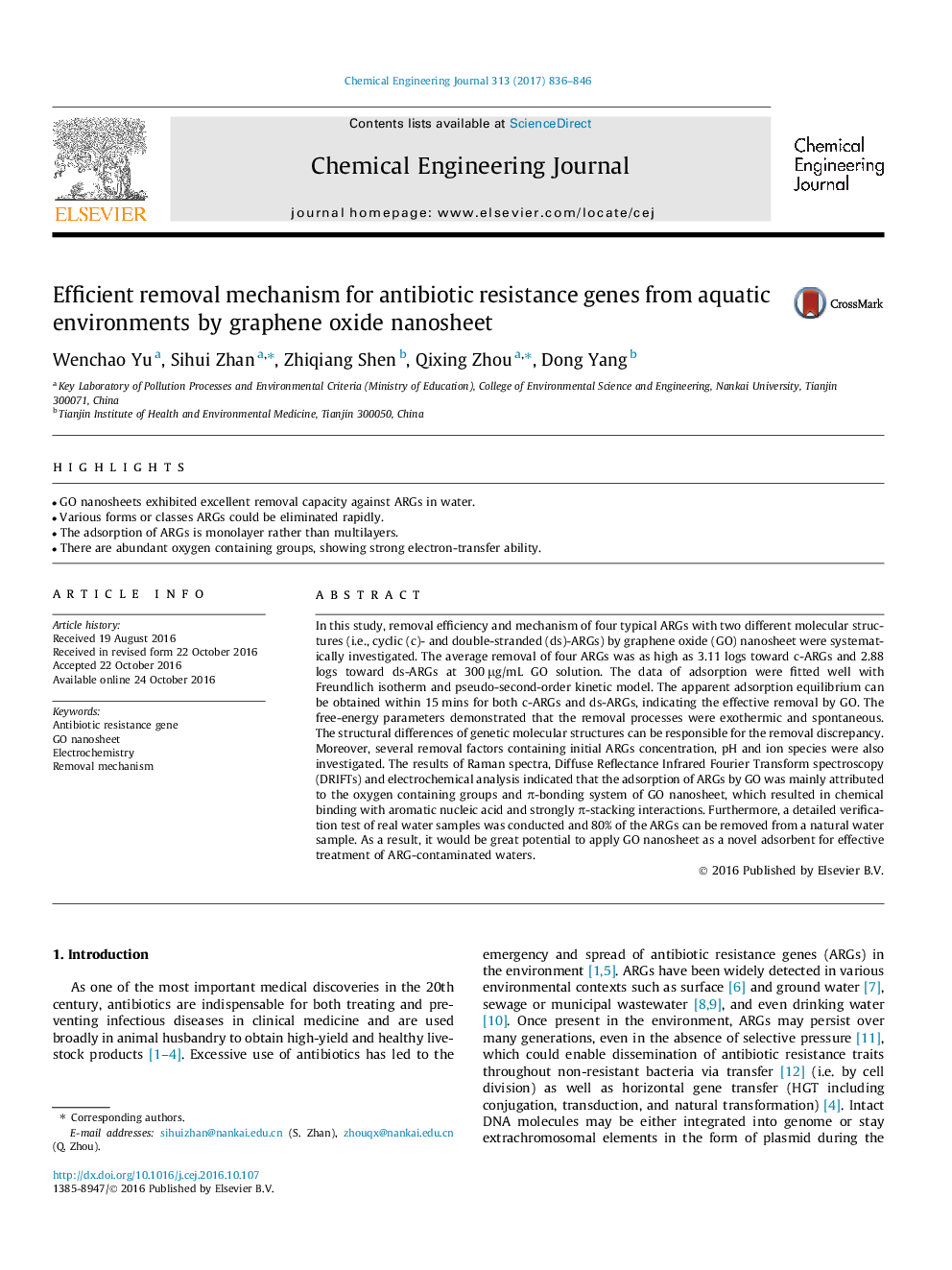| Article ID | Journal | Published Year | Pages | File Type |
|---|---|---|---|---|
| 6466624 | Chemical Engineering Journal | 2017 | 11 Pages |
â¢GO nanosheets exhibited excellent removal capacity against ARGs in water.â¢Various forms or classes ARGs could be eliminated rapidly.â¢The adsorption of ARGs is monolayer rather than multilayers.â¢There are abundant oxygen containing groups, showing strong electron-transfer ability.
In this study, removal efficiency and mechanism of four typical ARGs with two different molecular structures (i.e., cyclic (c)- and double-stranded (ds)-ARGs) by graphene oxide (GO) nanosheet were systematically investigated. The average removal of four ARGs was as high as 3.11 logs toward c-ARGs and 2.88 logs toward ds-ARGs at 300 μg/mL GO solution. The data of adsorption were fitted well with Freundlich isotherm and pseudo-second-order kinetic model. The apparent adsorption equilibrium can be obtained within 15 mins for both c-ARGs and ds-ARGs, indicating the effective removal by GO. The free-energy parameters demonstrated that the removal processes were exothermic and spontaneous. The structural differences of genetic molecular structures can be responsible for the removal discrepancy. Moreover, several removal factors containing initial ARGs concentration, pH and ion species were also investigated. The results of Raman spectra, Diffuse Reflectance Infrared Fourier Transform spectroscopy (DRIFTs) and electrochemical analysis indicated that the adsorption of ARGs by GO was mainly attributed to the oxygen containing groups and Ï-bonding system of GO nanosheet, which resulted in chemical binding with aromatic nucleic acid and strongly Ï-stacking interactions. Furthermore, a detailed verification test of real water samples was conducted and 80% of the ARGs can be removed from a natural water sample. As a result, it would be great potential to apply GO nanosheet as a novel adsorbent for effective treatment of ARG-contaminated waters.
